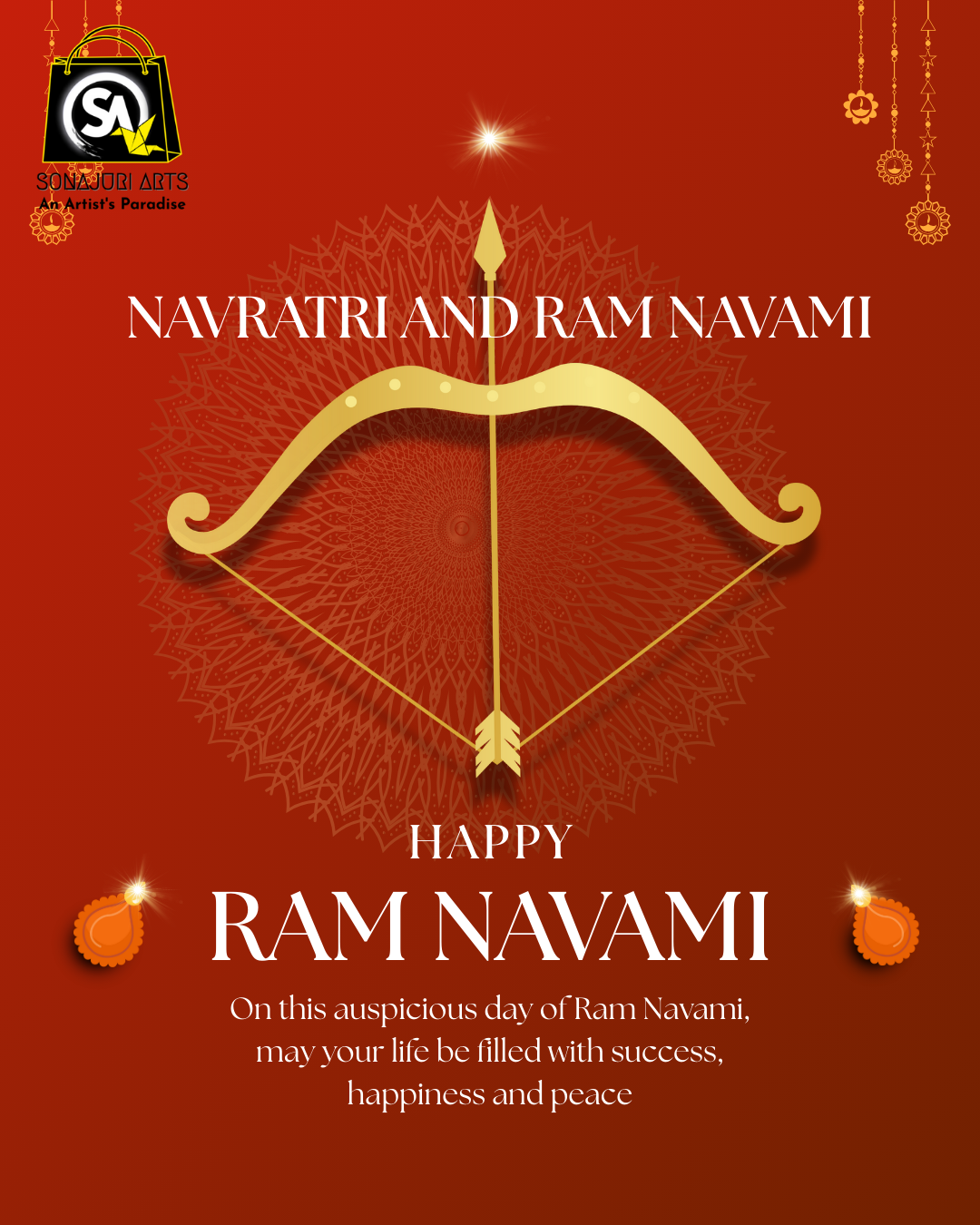Currently Empty: ₹0.00

India, a land of diverse traditions and cultures, celebrates numerous festivals that reflect its rich spiritual heritage. Among them, Navratri and Ram Navami hold a special place, signifying devotion, righteousness, and the victory of good over evil. While Navratri is a nine-day festival honoring Goddess Durga, Ram Navami marks the birth anniversary of Lord Rama. Both these festivals are deeply rooted in Hindu mythology and are celebrated with immense enthusiasm across the country.
Navratri: The Nine Nights of Divine Worship
Significance and Mythological Background
Navratri, meaning “nine nights,” is dedicated to Goddess Durga and her nine divine forms, known as the Navadurga. It is believed that during these nine nights, Goddess Durga fought against the demon Mahishasura and finally defeated him on the tenth day, known as Vijayadashami or Dussehra.
Hindus celebrate two major Navratris—Chaitra Navratri in March-April and Sharad Navratri in September-October. Sharad Navratri is the more widely celebrated of the two and culminates with Dussehra, symbolizing Lord Rama’s victory over Ravana.
The Nine Forms of Goddess Durga
Each day of Navratri is dedicated to one of the nine forms of Goddess Durga:
- Shailaputri – The daughter of the mountains.
- Brahmacharini – The goddess of penance and devotion.
- Chandraghanta – The warrior goddess.
- Kushmanda – The creator of the universe.
- Skandamata – The mother of Lord Kartikeya.
- Katyayani – The fierce form of Durga.
- Kalaratri – The destroyer of darkness and ignorance.
- Mahagauri – The symbol of purity and peace.
- Siddhidatri – The goddess of supernatural powers.
Rituals and Celebrations
Devotees observe fasting, offer prayers, and chant bhajans and mantras dedicated to the goddess. In some regions, the festival includes Garba and Dandiya Raas, vibrant folk dances performed in Gujarat and Maharashtra. The festival ends with Kanya Pujan, where young girls are worshipped as manifestations of the goddess.
Ram Navami: The Birth of Lord Rama
The Significance of Ram Navami
Ram Navami, observed on the ninth day of Chaitra Navratri, marks the birth of Lord Rama, the seventh avatar of Lord Vishnu. It is one of the most revered Hindu festivals and holds immense spiritual significance.
According to the Ramayana, Lord Rama was born in Ayodhya to King Dasharatha and Queen Kaushalya. His birth is considered a divine blessing, as he was destined to restore dharma (righteousness) by defeating the demon king Ravana.
Rituals and Celebrations
Devotees wake up early, take a holy bath, and visit temples to offer prayers to Lord Rama. Special Ram Katha recitations, bhajans, and Ramayana readings are organized in temples and homes. In Ayodhya, the birthplace of Lord Rama, grand processions and fairs are held, attracting thousands of devotees.
One of the main rituals observed is the Rama Janma Mahotsav, where devotees re-enact scenes from the Ramayana, depicting Lord Rama’s life and teachings. Many people observe fasting and prepare special dishes as an offering to the deity.
Similarities Between Navratri and Ram Navami
- Spiritual Significance: Both festivals emphasize devotion, faith, and the triumph of good over evil.
- Fasting and Worship: Devotees observe fasting and offer prayers to seek divine blessings.
- Mythological Connections: Ram Navami falls on the last day of Chaitra Navratri, linking it to the worship of both Goddess Durga and Lord Rama.
- Cultural Celebrations: Dance, music, and dramatization of mythological stories are common elements in both festivals.
Cultural Impact and Modern Celebrations
With changing times, the celebrations of Navratri and Ram Navami have evolved. While traditional customs remain, modern forms of celebration include large-scale community events, digital darshans, and social media initiatives to spread the spiritual message. Despite technological advancements, the essence of these festivals—faith, devotion, and righteousness—remains unchanged.
Conclusion
Navratri and Ram Navami are not just festivals; they are a celebration of divine power and moral values. They teach us the importance of righteousness, devotion, and inner strength. Whether through the nine nights of Durga worship or the birth of Lord Rama, these festivals inspire millions to walk on the path of truth and dharma, making them an integral part of India’s spiritual and cultural heritage.
